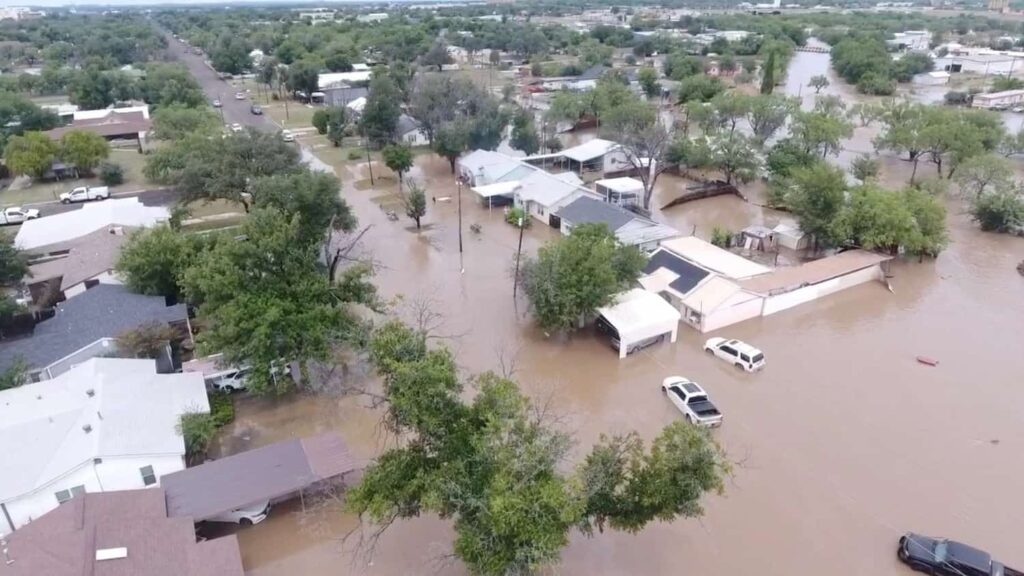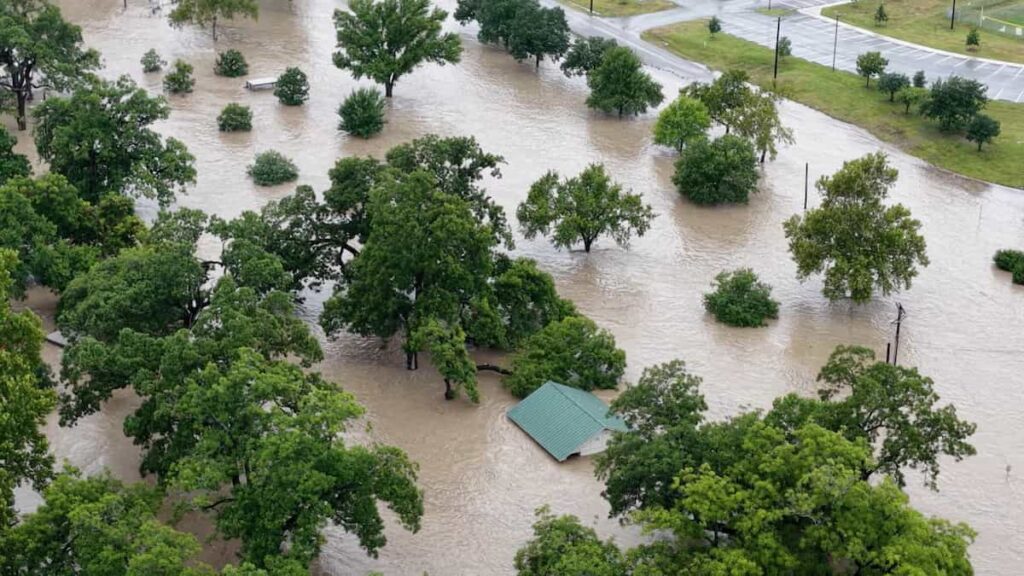
Between July 4 and 7, 2025, Central Texas—especially Kerr County and the Guadalupe River corridor—was struck by sudden, catastrophic flash floods following intense rainfall. A staggering 5 to over 20 inches of rain fell in mere hours, transforming creeks and rivers into raging torrents. In Hunt, the Guadalupe surged by 26 to 29 feet in under an hour, overwhelming low-lying areas and summer camps
Devastating Human Impact
- At least 104 people have now been confirmed dead, with 84 of those fatalities in Kerr County—including 28 children, many of whom were campers and counselors.
- Camp Mystic, a century-old all-girls summer camp near Hunt, bore the brunt of the disaster. The camp lost 27 individuals—campers and staff—in one tragic site.
- Even after days of recovery, officials report 24 missing nationwide, with 10 girls and one counselor still unaccounted for at Camp Mystic
Alarms, Warnings, and Missed Signals
Although the National Weather Service issued flash flood warnings around 1:14 a.m., the alarms came too late for many. Overwhelmed by the overnight timing, Camp Mystic initiated evacuation only around 3 a.m., as water levels had already become critical.
- Emergency alert systems—including CodeRed and NOAA radios—may have been hindered by poor cell reception or reliance on mobile alerts rather than outdoor sirens.
- This lapse has sparked calls for investing in local siren networks and enhancing weather monitoring infrastructure, with promises from state leadership to act swiftly.

Rescue Operations and Community Response
- Over 850 high-water rescues have been conducted, with state and federal teams—including Texas Game Wardens, the National Guard, and FEMA—searching tirelessly
- The California government pledged urban search-and-rescue assistance, while numerous volunteers and local organizations mobilized to support survivors .
- Actor Matthew McConaughey, a Texas native, called for donations and rallied awareness via his foundation
Weather Outlook & Meteorological Context
Meteorologists point to a potent blend of ingredients fueling the deluge:
- A slow-moving mesoscale convective system, reinforced by remnant moisture from Tropical Storm Barry and Gulf air, stalled over the region.
- Hill Country’s steep terrain and clay-rich soil promote rapid runoff—hallmarks of what’s known as “Flash Flood Alley”.
- Paradoxically, drought-hardened ground from earlier in the year made the region less absorbent, worsening surface flooding.
With more rain on the forecast, the National Weather Service has extended a flash flood watch for significant portions of Central Texas.
Economic and Infrastructure Damage
- Initial estimates suggest $18–22 billion in damage, affecting homes, roads, camps, farms, and rural infrastructure.
- Thousands are displaced as cabins and recreational facilities were washed away or severely impaired.
Accountability & Policy Fallout
The scale of tragedy has ignited debate:
- Local and state officials now face tough questions on whether early warning systems and emergency protocols functioned effectively.
- Critics argue that federal budget cuts to NOAA/NWS have weakened forecasting and alert capabilities—just as extreme weather events are becoming more frequent due to climate change.
- In response, Texas’s lieutenant governor has pledged accelerated funding for siren installations, while President Trump signed a federal disaster declaration and plans to visit the region later this week.
Healing, Recovery, and Reconstruction
- Families from devastated camps like Camp Mystic are planning vigil gatherings and memorial services in the days ahead.
- Local churches, NGOs, sports teams, and community groups are organizing donation drives and support services.
- A detailed after-action review is expected once rescue operations conclude—to assess preparedness, technology gaps, and future resilience needs.
What Comes Next
- Immediate priority: recover missing individuals and support displaced residents.
- Short term: shore up emergency systems—install sirens, enhance cell coverage, and broadcast NOAA radios—especially near camps and flood-prone zones.
- Mid-term: invest in flood-resistant infrastructure—improving drainage, reinforcing bridges, and bolstering river banks.
- Long term: address environmental factors feeding flash floods: climate shifts, land-use planning, and federal policy on weather readiness.
The July 2025 Texas floods join the annals of America’s deadliest inland floods. More than a tragic accident, this is a wake-up call—to modernize early warnings, reinforce local preparedness, and adapt to a world where once-in-a-century storms may soon become regular occurrences.